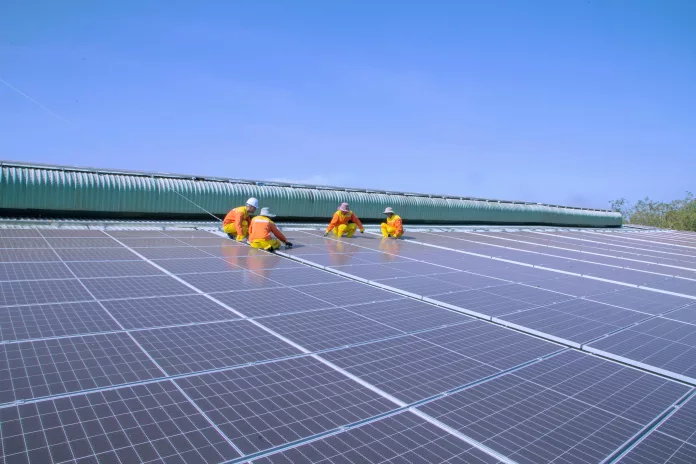The solar industry in the United States reached a remarkable milestone in 2023, installing a remarkable 32.4 gigawatts (GW) of solar energy capacity—a 37% increase from the record established in 2021 and a 51% surge from the total in 2022. This spike represents the most substantial addition of renewable electricity to the power grid in over eight decades, indicating solar energy’s accelerating growth.
Solar Energy Takes the Lead in Electric Generating Capacity
The influential US Solar Market Insight 2023 Year-in-Review report, published by the Solar Energy Industries Association (SEIA) and Wood Mackenzie, emphasizes that solar represented 53% of all new electric generating capacity added last year. This figure marks an unprecedented event since no other renewable source has contributed over half of the capacity additions annually for 80 years.
Growth Across All Market Segments
All sectors within the solar market witnessed growth in 2023, pushing the total installed solar capacity in the US to an impressive 177 GW. Leading the charge, the utility-scale segment contributed 22.5 GW of this new capacity. Additionally, the widespread adoption of solar energy was further highlighted by the near 800,000 American homeowners who decided to harness the sun’s power for their residences.
The Inflation Reduction Act Boosts Solar Deployment
Abigail Ross Hopper, president and CEO of SEIA, lauded the Inflation Reduction Act for significantly boosting solar deployment and its positive impact on the economy. The country’s solar module manufacturing base saw an 89% growth in 2023, thanks to the policies set forth by the act. Hopper underscores the importance of safeguarding and enhancing these policies to sustain investment and job creation in the sector.
Quarterly Insights and Leading States
Delving into the quarterly performance, the “US Solar Market Insight Q4 2023” report revealed that new solar installations tallied at 6.5 GW in the third quarter alone, a 35% increase year-over-year. States such as California and Texas led the way in new solar installations, with Indiana making a significant jump to third place due to large utility-scale projects coming online. In total, fourteen states alongside Puerto Rico installed over 100 MW of new solar capacity in the third quarter.
Predictions and Challenges for the Solar and Storage Industry
Despite the optimistic outlook for solar energy as the predominant source of generating capacity on the US grid by 2050, the industry is not immune to economic challenges. Current issues such as increased financing costs, transformer shortages, and interconnection bottlenecks are already influencing the pace of growth. Nevertheless, the utility-scale segment managed to deploy a record-setting 12 GW in the first nine months of 2023.
Residential Solar and Future Growth
The residential solar segment installed a record-breaking 210,000 systems in the third quarter. However, regulatory changes, such as those in California, have led to a significant reduction in installations. Combined with higher interest rates, this is expected to result in a temporary downturn next year before growth picks back up in 2025.
Wood Mackenzie’s head of solar research, Michelle Davis, predicts a robust 55% growth for the US solar industry in the current year, with a moderated 10% growth in 2024. Challenges such as interconnection constraints could slow growth from 2026 onwards, making it imperative for the industry to innovate and enhance the value solar brings to the evolving grid.
Optimism Remains Despite Setbacks
Fueled by supportive legislation like the Inflation Reduction Act, solar capacity has set new records and is anticipated to continue growing, albeit at a slightly slower pace. As the industry navigates uncertainties, regulatory modernization, interconnection reform, and increased storage attachment rates will play crucial roles. Furthermore, startups are developing innovative solutions to improve grid management that could help to address current bottlenecks.
The solar industry is undertaking a transformative transition towards clean energy, necessitating recalibration to address various challenges. While some obstacles, such as interest rates, are beyond control, there is hope that regulatory and infrastructural improvements will soon alleviate clean energy bottlenecks.

























